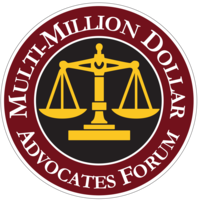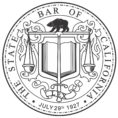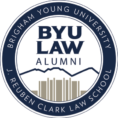California’s Comparative Fault System: What You Need to Know

Each state in the country has a method for comparing negligence in personal injury claims. If one party was harmed due to another party’s actions, comparative negligence laws come into play. These determine the amount of compensation the defendant pays and how much the plaintiff receives.
While the majority of states recognize the comparative fault system when it comes to negligence cases, not all of these states follow the same types of comparative fault laws. Currently, California is 1 of 13 states guided by the pure comparative fault system. Additionally, 33 states have a modified comparative fault law, while four states and DC allow for pure contributory negligence.
Were you harmed in a personal injury accident in California? A lawyer at Harker Injury Law can explain how pure comparative fault works and how this could affect your case. Contact us today to schedule a free case evaluation.
California’s Pure Comparative Fault Law Explained
Personal injury cases can arise for many different reasons. At times, these claims involve opposing parties who both share fault for the resulting damages and injuries.
California’s comparative negligence law sets out how fault must be divided between all parties involved in an accident. The damages you are awarded will be reduced based on your own appointment of fault, or your own contribution to the accident.
For example, let’s say you were in a car accident where the driver ran a red light, but you were distracted at the time of the collision. You could be assigned a percentage of liability. As a result, if you were awarded $100,000 for your injuries but were found to be 25 percent at fault, you would receive $75,000 in damages.
The fact that California is a “pure” comparative negligence state means that, regardless of how much of the blame you share, you can still recover an adjusted portion of the damages. This means even if you are 99 percent responsible for your injuries, you can still recover 1 percent of the awarded damages.
Elements Related to Pure Comparative Negligence
In order to understand how California’s comparative negligence law will affect your personal injury claim, it is important to understand the following legal concepts:
- Negligence: When it comes to personal injury claims, parties are considered negligent when they fail to act with reasonable care. The level of care is measured by what a “reasonable” person would have done in a similar situation.
- Fault: In legal terms, “fault” refers to the degree of responsibility that each party has for an accident. Numerous factors are taken into consideration when determining fault, such as the actions of all parties involved, any outside elements that may have contributed to the incident, and all relevant laws and regulations.
- Liability: The liable party is, in other words, legally responsible for the accident and any resulting damages. After determining fault, liability will be apportioned to all parties involved based on their percentage of negligence.
- Damages: Damages are monetary compensation awarded to accident victims in personal injury claims. Types of damages available to you may include compensation for medical bills, lost wages, pain and suffering, and more.
Pure vs. Modified Comparative Negligence Rules
The negligence system that will be used to govern your case will depend on jurisdiction. In other words, it depends on which state your case is being filed in.
While California follows pure comparative negligence rules, other states use a modified comparative negligence system. Under both pure and modified comparative negligence rules, the law seeks to assign a percentage of fault to each party involved in an accident.
The main difference between the pure and modified negligence systems is the amount of fault that must be attributed to the injured party in order for them to qualify for damages. As mentioned earlier, under the pure comparative fault rule followed in California, even if the victim holds 99 percent liability, he or she can still collect 1 percent of the damages.
However, in states that follow a modified comparative fault system, victims are ineligible to collect damages once their fault hits a certain percentage. In some states, this percentage level is 50 – and in others, it’s 51.
The 50 percent rule is a common form of modified comparative negligence. This limits the plaintiff to receiving damages from another party only if he or she is found to be less than 50 percent liable for what happened.
If the injured party is found to share more than the specified percentage of blame for the accident, he or she is not eligible to receive any compensation for damages from the defendant – but only in states that apply the modified comparative negligence rule.
For cases falling under California’s jurisdiction, you don’t have to worry about modified comparative negligence at this time.
Outside of California: The Rules of Pure Contributory Negligence
While most states employ pure or modified comparative negligence systems, a handful of states follow the rules of pure contributory negligence. Beware, for these sound similar, but do not match.
Under the pure contributory system, if injured parties are found to be even 1 percent to blame, they are barred from recovering compensation from other parties involved in the accident.
Consider the example of a drunk-driving car accident. If a drunk driver hit a pedestrian who was crossing in the middle of the road instead of using the crosswalk, the pedestrian was not using reasonable care.
Who is liable in such a case? The driver can clearly be found negligent for driving while intoxicated. However, suppose for a moment that the pedestrian was also negligent in some way.
If this were to occur in California or another comparative negligence state, the pedestrian would still likely be awarded a percentage of compensation for damages.
In contrast, contributory negligence states do not allow such compensatory awards. In these states, a pedestrian found to be even 1 percent at fault may not be eligible to receive compensation from the at-fault driver.
The pure contributory negligence system makes it extremely difficult for plaintiffs to recover compensation for their injuries. The other party must be found 100 percent at fault for the accident, or you will likely be ineligible to collect monetary damages from the party who injured you.
Types of Cases Affected By California’s Pure Comparative Fault System
California’s pure comparative fault law can apply to any personal injury claim resulting from another person’s negligence – except for no-fault claims such as workers’ compensation or PIP claims.
Examples of California personal injury cases impacted by the pure comparative fault system include:
- Car accidents
- Truck accidents
- Slip-and-falls
- Pedestrian accidents
- Dog bites
- Motorcycle accidents
- Defective products
- Premises liability accidents
- Medical malpractice
- Wrongful death
How California’s Pure Comparative Negligence Law Could Impact Your Car Accident Case
During one recent year, there were over 269,000 people injured in car accidents in California.
In traffic collisions, it is common for more than one driver to share fault for a single incident. Some car accident victims may be reluctant to pursue compensation for their injuries because they feel they were partially to blame for the accident.
However, under California’s pure comparative negligence law, you could still recover compensation even if you played a role that contributed to the collision.
The following is a list of some poor driving behaviors that can be used to reduce damages in car accident claims:
- Distracted driving
- Speeding
- Tailgating
- Failure to yield
- Failure to adapt to poor weather conditions
- Unsafe lane changes
- Improper merging
- Failure to wear a seatbelt
- Reckless driving
Identifying what role each party played in the car accident is essential to recovering fair compensation for your injuries. For this reason, it is recommended that you hire an experienced attorney to represent you.
A lawyer will investigate your car accident case and ensure that every angle of the incident is looked at and considered for liability.
In some situations, third parties could be partially liable. For instance, potentially liable parties in your case may include vehicle manufacturers or construction crews.
Even if you had something to do with the car accident, under California’s pure comparative fault system, you may still be able to recover some damages.
How Pure Comparative Negligence Laws Could Affect Your Slip-and-Fall Case
A slip-and-fall accident may have left you with broken bones, back injuries, head injuries, or other severe medical issues. If your slip-and-fall was a result of a dangerous or hazardous property condition, you may be able to file a personal injury claim against the property owner for damages.
In order for your slip-and-fall case to be successful, you and your personal injury lawyer must be able to prove that the property owner was negligent and that his or her actions or inactions caused your accident and injuries.
However, if your slip-and-fall case goes to trial, the property owner may try to place part of the fault on you and use California’s comparative fault law to try to reduce the amount he or she has to pay.
Common arguments defendants could use against you in slip-and-fall cases include:
- You ignored posted warnings about the property hazard
- You were not paying attention to your surroundings when the accident occurred
- Your slip-and-fall would not have happened if you were wearing appropriate footwear
- The dangerous property condition was clearly visible
- You were in a certain area of the property without permission
At trial, the court will decide whether you played a role in the accident and, if so, what percentage of fault should be attributed to you. When you hire a personal injury lawyer to represent your case, he or she will work hard to ensure the property owner or other liable parties are found at fault for the slip-and-fall and to minimize any role you played in the incident.
Comparative Fault in Product Liability Cases
In the US, when you purchase a product, you have certain legal rights as a consumer. If a company manufactures or designs a product that causes harm, the company can be held liable for damages.
After sustaining an injury from a defective product, you may have grounds to file a personal injury lawsuit against the designer, manufacturer, or distributor – depending on how the product proved to be defective.
In product liability cases, the more fault apportioned to you, the less money the defendant will have to pay. For this reason, manufacturers and distributors will do all they can to shift part of the blame onto you. One defense they may use is to claim that you negligently used, misused, abused, or modified the product.
Since defective product cases can have a large impact on a company’s financial future and potential injuries suffered by other consumers, manufacturers and distributors can often be aggressive in their legal efforts to deny, dispute, and minimize their liability.
Evidence Used to Determine the Percentage of Fault After a Personal Injury Accident
A thorough investigation is required to determine the percentage of fault after an accident occurs. Just as you need evidence to prove that you were injured and entitled to financial compensation, the defendant in your personal injury case will need evidence to prove that you were partially responsible.
The following types of evidence may be used to determine the percentage of fault in a personal injury lawsuit:
- Eyewitness testimony
- Photos
- Cell phone records
- Video surveillance, dash cam, and traffic cam footage
- Police reports
- Statements from accident reconstructionists, engineers, doctors, and other experts
While investigating your accident, your personal injury lawyer will analyze any evidence of possible comparative negligence and come up with a legal strategy to strengthen your claim.
Tips to Avoid Comparative Negligence Allegations After an Accident
When pursuing damages after an accident, you want to recover the full amount of compensation you are entitled to receive. You can be sure the insurance company is going to do everything possible to reduce the amount they have to pay out.
The following are some suggestions to improve your chance of winning against comparative negligence allegations:
- Don’t give a recorded statement to the insurance company without the presence of your lawyer
- Do remember that everything you say might be recorded when you speak to the insurance company
- Don’t admit fault or apologize at the accident scene
- Do seek medical attention as soon as possible after your accident, and follow through with any prescribed medical treatments
- Don’t post about your accident on social media until after your case has been settled
- Do keep good records of your doctor’s visits, injuries, and how the accident has affected your daily activities
- Do make sure to consult a personal injury lawyer as soon as possible
What to Do If the Insurance Company Accuses You of Being Partially Responsible for an Accident
The insurer knows that, if they can prove that you share part of the fault, your claim may be devalued under California’s comparative fault law. So the insurance company of the other party may argue that you were partially at fault because of something you did or did not do before the accident.
If the insurance company is trying to blame you, in whole or in part, the best thing you can do is consult an attorney. An experienced attorney can successfully handle all communication and negotiations with the insurance company on your behalf. If the insurer refuses to pay just compensation, though, your lawyer is ready for the next step: going to court.
What If Multiple Parties Are At Fault for the Accident?
In some situations, multiple parties may be at fault for an accident. For example, suppose one driver who was trying to beat a red light at an intersection collided with another driver who entered the intersection before the light turned green. When the vehicles struck each other, they slid out of control and crashed into you on your motorcycle.
Each party involved in this scenario will have his or her own account of what took place. If the case goes to court in California, the judge and jury will examine the presented evidence and decide what percentage of fault is allocated to each party involved. The amount of compensation each party owes you will depend on their percentage of fault in the accident.
When multiple defendants are involved in your personal injury accident lawsuit, this can further complicate the legal process. Thus, after being involved in an accident involving multiple parties, you need a lawyer on your side to clear the path before you.
Types of Damages Available Under California’s Pure Comparative Fault Law
A personal injury attorney can help you recover every applicable loss you have suffered as a result of your injury. Under California law, accident victims can pursue compensation for both economic and non-economic damages.
The following damages are commonly awarded under California’s comparative fault law.
Economic damages
Your recoverable economic damages may include:
- Medical expenses: Ambulance rides, diagnostic testing, surgeries, doctor visits, medication, rehabilitation therapy, and other medical expenses
- Lost wages: Reimbursement for income lost while recovering from your injuries
- Property damage: Compensation for the repair or replacement of your vehicle and any other possessions damaged in the accident
- Loss of earning capacity: Compensating a person who is suffering from a long-term injury for the loss or reduction in the ability to earn income
Non-economic damages
Recoverable non-economic damages could include:
- Pain and suffering
- Loss of companionship
- Emotional distress
- Loss of consortium
- Mental anguish
- Diminished quality of life
- Inconvenience
Contact Us to Schedule a Free Case Evaluation
Do you have questions about California’s pure comparative negligence law? Are you being partially blamed for an accident? If so, the legal team at Harker Injury Law is here to help. We have the knowledge, experience, and resources needed to stand up to insurance companies who try to devalue fair claims.
The compassionate lawyers at Harker Injury Law care about the people we help. We will do everything we can to ensure you recover maximum compensation for your losses. Our law firm has recovered millions of dollars in compensation for our clients, and we can do the same for you.
We take all California personal injury cases on contingency. You do not owe us anything unless your case is successful and we recover compensation for you. Complete the contact form to schedule your case evaluation.










